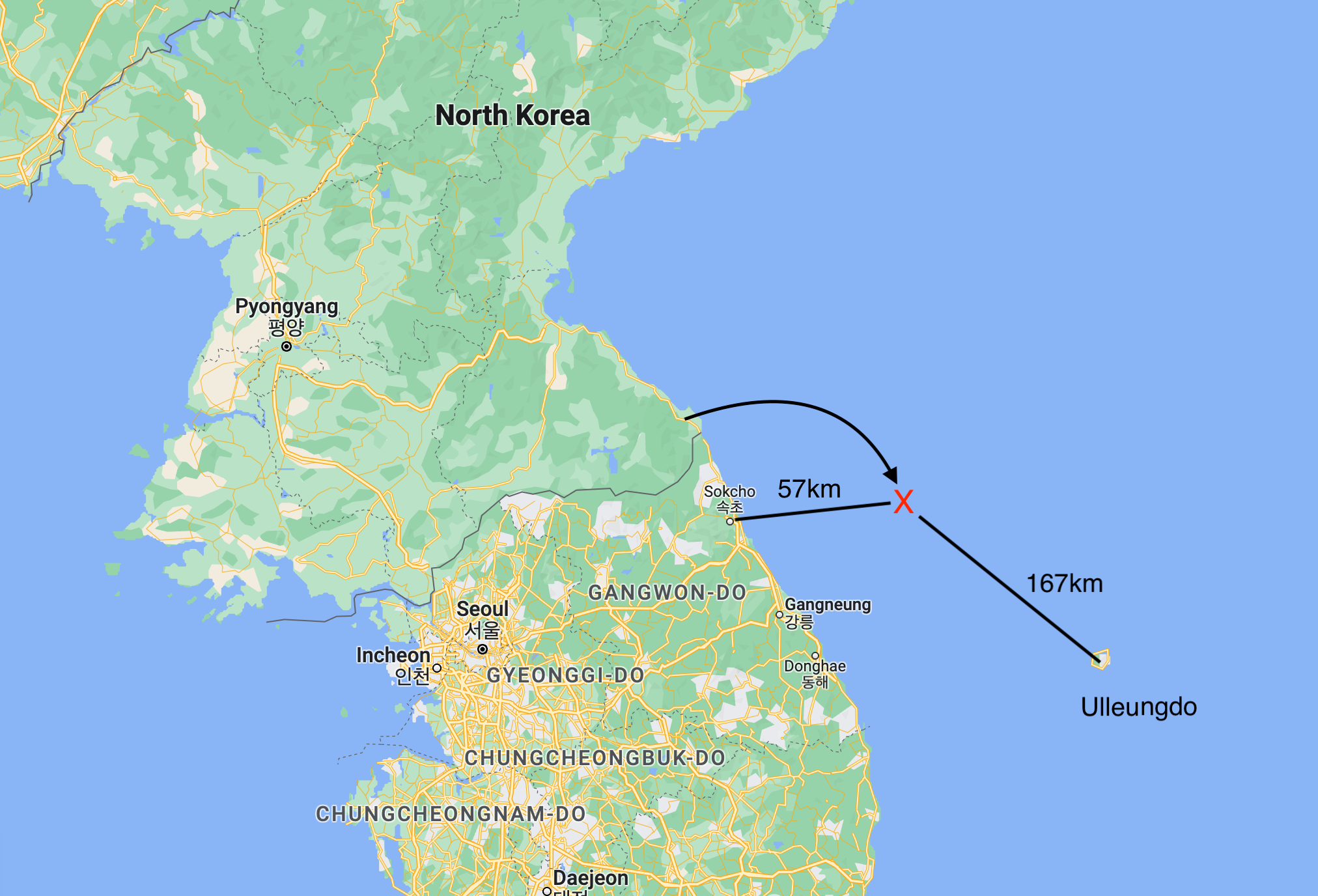Follow us on Telegram for the latest updates: https://t.me/mothershipsg
North Korea launched more than 20 missiles into the sea on Nov. 2, the highest number launched in a single day in 2022, AP News reported.
In the latest update, four more short range ballistic missiles were fired into the West Sea on Nov. 4, continuing military provocations for the fourth consecutive day, Korea Herald further reported.
One missile fired earlier in the week landed just 57km off South Korean coastal city of Sokcho, and 167km off the island of Ulleung.
This came days after the United States and South Korea conducted military exercise Vigilant Storm, one of their largest combined military air drills.
What happened when provocations started
At around 7am on Wednesday, Nov. 2, the first four short-range ballistic missiles flew from North Pyongan province into the Yellow Sea, NBC News reported.
Two hours later, three more projectiles were fired from Wonsan into the East Sea, one of which crossed the Northern Limit Line (NLL), a disputed inter-korean maritime border, Korea Herald reported.
 Photo via Google Maps
Photo via Google Maps
The missiles prompted air raid sirens to sound off on Ulleungdo at around 8:55am, where residents were told to evacuate to underground bunkers.
At 9:15am, an announcement was made that the projectile had fallen into the East Sea.
At around 10am, North Korea then fired 16 more missiles from various sites into the Yellow Sea and East Sea.
First time missile landed so close to South Korea
This was the first time that a missile had landed so close to the South Korean coast since the peninsula's division.
Previously, missiles landed within the North Korean coast, near the North-South border or near Japanese waters.
The launches came just hours after Pyongyang demanded that the U.S. and South Korea stop large-scale military exercises, saying such “military rashness and provocation can be no longer tolerated”, it was reported.
North Korea further escalated the provocation by firing over a hundred artillery shells into the military buffer zone in between North and South Korea, commonly known as the Korean Militarised Zone or DMZ.
South Korean warplanes fired three air-to-ground missiles into the sea north of the NLL in retaliation, the South's military said.
In response, Kang Shin-chul, director of operations for the South Korean military’s Joint Chiefs of Staff (JCS) said in a statement that the South Korean military "can never tolerate North Korea’s provocative act and will sternly respond to it in close cooperation with the U.S.", Korea Times reported.
Japanese defence minister Yasukazu Hamada had also expressed his objection to North Korea's actions, saying that its recent successive missile launches "threaten the peace and security of our country, the region, and the international community, and are absolutely unacceptable”.
Japanese officials also believe that one of the missiles may have been an intercontinental ballistic missile (ICBM), which triggered an alert for residents in Niigata, Yamagata and Miyagi prefectures to seek shelter.
However, the missile is believed to have failed in flight, falling into the sea of Japan.
The ICBM is believed to be North Korea's longest-reaching missile, which are designed to carry nuclear warheads to the other side of the world.
What prompted the missiles
On Monday, Oct. 31, the U.S. and South Korea staged Vigilant Storm, involving hundreds of warplanes from both sides staging mock attacks 24 hours a day, Japan Times reported.
The exercises – involving more than 240 aircraft, including advanced stealth jets – were the first major drills of their kind in five years.
The next day, Pyongyang warned Washington and Seoul that such exercises were seen as "aggressive and provocative", and may eventually warrant "more powerful follow-up measures".
There has been increased defence collaboration between the U.S., South Korea and Japan, with representatives from each country reaffirming their trilateral cooperation at the United Nations General Assembly towards denuclearising the Korean peninsula.
Expressing concern over North Korea's destabilising behaviour, the U.S. has reaffirmed its steadfast commitment to the defence and safety of South Korea and Japan.
Not the first time
Both the North and the South are still technically at war, with an armistice signed in 1953 resulting in a ceasefire.
North Korean leaders claim that the deliberate escalation prompts North Korea's readiness to defend against regional and international threats.
The escalation seems to have increased exponentially in the face of increased trilateral cooperation.
One analyst interviewed said Pyongyang appears to have staged the most aggressive and threatening armed demonstration against the South since 2010 to protest the joint U.S.-South Korea drill.
More North Korean action
This year, North Korea has conducted a total of 29 missile launches, according to a CNN count.
It also plans to execute their seventh underground nuclear test and a controlled nuclear explosion at the end of this year, its first one since 2017.
The U.S. condemned North Korea's ICBM launch, State Department spokesman Ned Price said in a statement.
"This launch is a clear violation of multiple United Nations Security Council resolutions," he said.
It also demonstrates the threat from North Korea's unlawful weapons of mass destruction and ballistic missile programmes, Price added.
Top photo via Unsplash
If you like what you read, follow us on Facebook, Instagram, Twitter and Telegram to get the latest updates.
